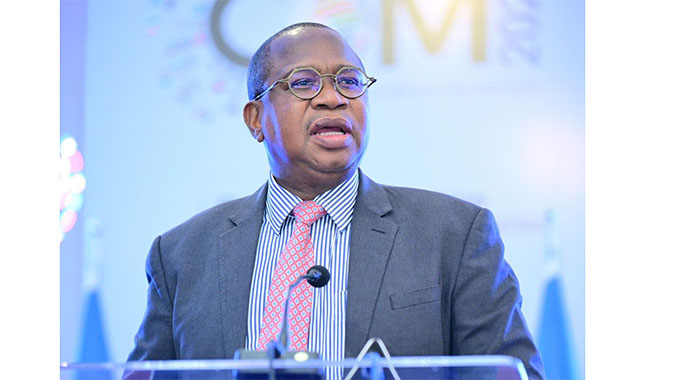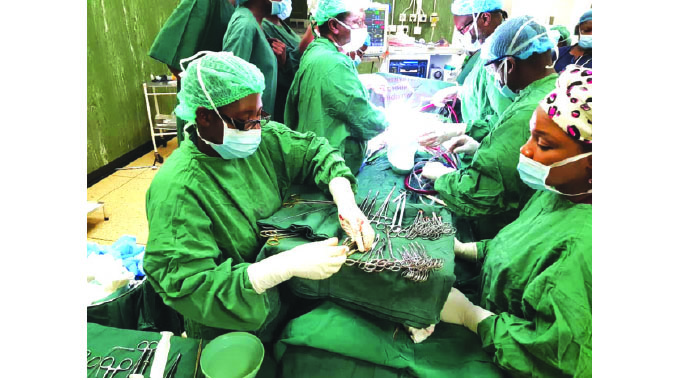CATCH 22 FOR HEALTH INSTITUTIONS
Senior Health Reporter
The new results-based financing for health service delivery under the Health Development Fund (HDF) may result in those who have, getting more while other institutions become increasingly marginalised, some stakeholders have said. Separate interviews conducted by The Herald recently following Government’s decision to adopt results-based financing for health facilities under the Health Transition Fund (HTF) revealed that most of the facilities were struggling to meet standards set for them to get reasonable amounts of funding.
While some rural clinics have been receiving up to $3 000 per quarter, others have been getting paltry amounts like $50 for the same period as they fail to meet given indicators. Mberengwa District Hospital is one such institution, which without some form of prior financial assistance might fail to produce required results to get more funding.
Sister-in-charge at the hospital Ms Eggie Murati said they were prepared to move to results-based financing but required “starter packs” for them to produce good results.
“It is going to be very difficult for us to produce results from zero. We needed something like a starter pack so that we improve our service and attract more funding,” she said.
Sister Murati said with the previous funding arrangement, they were getting $1 500 per quarter, which she described as very little considering that the district hospital serves a large area and many people.
She said the hospital assists an average of 60 women per week and has two qualified midwives.
“We do not have a mother’s waiting shelter, our linen is torn and bedding is old and sometimes we run short of sundries yet these are some of the key indicators that attract more funding,” she said.
Apart from the hospital being heavily congested, its buildings are dilapidated and require a lot of work to reach required standards.
Sister Murati said the labour ward was too small, leading to many patients being forced to make do with floor beds (blankets and linen spread on the floor).
She said some clinics in the districts such as Jeka which got assistance from other donors to revamp their labour wards were getting as much as $1 500 per quarter yet they did not cater for as many people as the district hospital.
Under HTF clinics used to get a flat amount of money averaging $750 per quarter.
With adoption of results-based financing, clinics are required to produce good results whose indicators include assisting proven numbers of women to deliver safely and meeting certain standards of care. These results then determine how much a clinic should get.
District medical officer at Gokwe District Hospital Dr Takunda Solar said results-based financing will result in an improved service culture among the health care providers. “RBF is the way to go, it encourages our workers to set standards, improve quality of care and encourages development,” he said.
Dr Solar said as Government and its partners graduate from HTF to HDF they should consider availing funding advancement to affected institutions to ensure continuity in progress towards improving maternal and child health.
Dr Solar said some institutions have already achieved good results as they have built mothers’ waiting homes, constructed boreholes and procured drugs with these performance-based grants. One of the pregnant women interviewed at Gokwe Hospital, Ms Audrey Banda, said there was great improvement at the labour ward with regards to service delivery.
Ms Banda, who gave birth to her first child at the same institution in 2009, said then women were asked to bring own equipment such as cotton wool, two umbilical cord clips, spirit, 10 pairs of gloves and razor blades.
“I delayed checking into the mothers waiting shelters because my sundries were not enough but surprisingly when I came, I was told all these things are provided for at the labour ward,” said Mrs Banda.
She, however, said more needs to be done at the mother’s waiting shelters where she described conditions as appalling. “There is no toilet and we use the bush system. The houses need electrification and thatching,” she said. Ms Banda said they were also asked to pay $10 to stay in the homes. But Dr Solar said the homes were owned by Gokwe Rural District Council and there was nothing much the hospital could do to improve conditions.
“We are in the process of negotiating with the council so that we take over the clinics, once that is finalised we will then be able to improve conditions of service at the homes,” he said. Dr Solar said the sundry equipment Mrs Banda alluded to was procured with funding from HTF, but without a starter pack to continue procuring these sundries as they move to performance-based funding, the hospital might find it difficult to continue with set standards.
Both Dr Solar and Sister Murati said that the HDF could be adjusted to the same model as that used by the World Bank in the country. Under that system districts received starter packs at the commencement of the programme in 2010.
Fortunately there is hope that concerns will be addressed to create a level playing ground that ensures ultimate beneficiaries – who are the people in need of health services – will access treatment and care at comparable levels.
Unicef chief of communications Mr Victor Chinyama said the HTF steering committee recognises that the system is raising several equity challenges, particularly for those institutions with a low catchment population and a low volume of work.
“The steering committee is therefore currently considering proposals to make the system more equitable for all health facilities while at the same time maintaining the essence of results-based financing. The proposals will be made known in due course once they have been approved by the steering committee,” he said.
Speaking at the launch of the new fund last week, United Nations Children’s Fund representative Mr Raza Hossaini said the difference between HTF and HDF was that the fund will have to do more work but with less funding, hence reaping more value for money.
“HDF will not only cover maternal, newborn and child health and nutrition but will also include reproductive health and adolescents. We will need to be ultra-efficient with the resource we have, and to ensure that we maximise impact,” he said.
He also said assessment of HTF has proved the importance of aligning the fund to national priorities, the need to pool external financing behind Government-driven plans, and the need for a coordination mechanism led by the Ministry of Health.
“It is these ingredients that made the HTF effective, efficient, and relevant to the country’s needs, and it is these same ingredients that will make the HDF equally successful,” said Mr Hossaini.
Just as with the HTF, UNICEF continue to be fund manager while UNFPA comes on board with women and adolescence programming.
Officially launching the HDF, Health and Child Care Minister Dr David Parirenyatwa said Government was determined to ensure that there was value for money for all activities.
“We are cognisant of the fact that our economy does not have enough fiscal space. Thus prioritisation becomes very key in our decision making process,” said Dr Parirenyatwa.
He said as Government implements the HDF, there is also going to be more analysis of our data to find out what exactly is missing to ensure that they remain focused with their interventions.
“The HTF comes to an end at the end of 2015 and with funding of the HDF most of the activities will be continued. HDF will ensure that the momentum is not lost on activities that are already under implementation,” said Dr Parirenyatwa.
UNFPA executive director Ms Kate Gilmore commended Zimbabwe for launching HDF saying the country was in the right direction in line with Sustainable Development Goals (SDGs).
She said the HDF speaks to SDGs in particular Goal 3, which addresses inclusion of universal access to sexual and reproductive health services, maternal health, HIV and AIDS.
SDG goal 5 zeroes in on discrimination against women and girls, gender-based violence, harmful practices including child, early and forced marriages.
“This is the best way forward to make a difference and achieve our goals. I hope that Zimbabwe through the HDF will lead the way in providing new thinking and innovations that the world can learn from and emulate,” she said.
Since the launch of HTF five years ago, massive improvements have been realised in the health sector with particular reference to maternal and child health.
Latest statistics from the Multiple Indicator Cluster Survey (2014) showed a decline in the number of women who die during child birth to 614 deaths per 100 000 live births down from 910 deaths per 100 000 in 2009.
More than 2 500 midwives have been trained and deployed and allowances were given to critical staff, which went a long way to increase the number of doctors in district hospitals from 70 in 2011 to 139 in 2014.
About 85 percent of primary health care facilities are stocked with essential medicines at any given time.





Comments